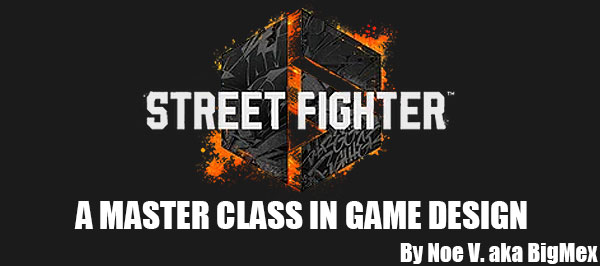
After playing every day for over a month, and with no sign of slowing I can say with all honesty that Street Fighter 6 is my game of the year. It offers three distinct game modes; World Tour, Fighting Ground, and Battle Hub. Fighting Ground is the traditional “Arcade Mode” that most long-time players are familiar with. Hands down the design, animation, control, and polish makes it the 2023 fighting game of the year. No other studio even comes close to the number of features, balance, and yet ease of use that SF 6 does. The fact that the game has two additional modes on top of it makes it a strong candidate for the 2023 game of the year. I understand that the Legend of Zelda: Tears of the Kingdom, and Spider-Man 2 are also the front-runners, but I want to do a deep dive as to why Street Fighter 6 should not only be considered the game of 2023, but is also a master class in game design.
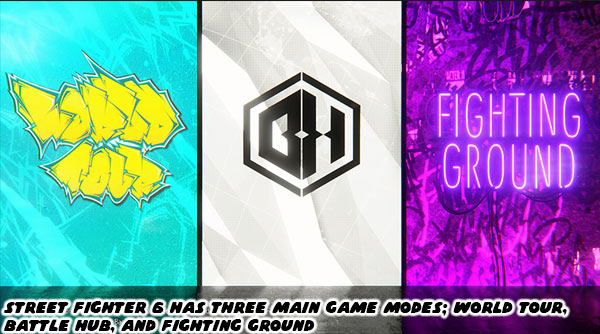
Fighting games are extremely popular, however they are sometimes regarded as a niche in the game community. When journalists, and writers talk about game of the year the majority of the time they look at adventure games as the representative of all titles. The Legend of Zelda, God of War, and Elden Ring (Dark Souls) are examples of franchises that are often at the top of the ballots. On occasion a horror game such as Resident Evil, first-person shooter like Halo, or role-playing game like Final Fantasy might be included in the selection. More often than not there are separate categories to honor the different genres. As far as I remember a fighting game has not been considered as the best overall game in the past few decades. Part of that has to do with accessibility. Fighting games require a large amount of practice to become good at. In this case they are similar to racing games. There is no substitute for putting in the miles in order to get better at them. No matter how much work went into titles such as Gran Turismo, and Forza, or how well regarded they were by racing fans, the larger population wouldn’t consider them to be game of the year because they were too niche. They required a lot of skill just to start with, let alone advance through. What if Sony, Microsoft, or in this case Capcom made a game that could be enjoyed by people with zero fighting game experience? The challenge was not only that, but how did developers get new players into the title without turning their backs on the life-long fans? This was the challenge posed to the team at Capcom, and one that the new series director Takayuki Nakayama acknowledged. He brought this up in an
interview with Oricon news (in Japanese) about making SF more accessible. What the studio delivered set a template that should be studied by every fighting game developer out there.
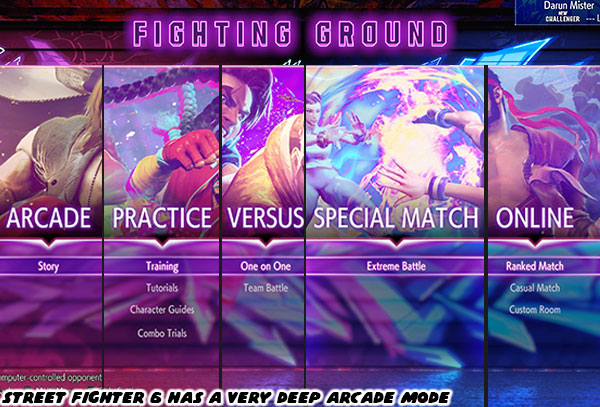
From a stand alone perspective the Fighting Ground mode in Street Fighter 6 (SF6) is the most thorough arcade mode in company history. It offers a complete story mode, one that rewards players with multiple play throughs for each character. Game art, concept art, and other goodies are earned by playing through the various modes. For those that are completely new to the genre there are multiple training modules. Practice: Training, Tutorials, Character Guides, Combo Trials. For the intermediate, and advanced players there are multiple Versus modes. One on One, Team Battle, and the frantic Special Match: Extreme Battle. For serious players there are even modes for online play: Ranked Match, Casual Match, and Custom Room. These modes are great, but they don’t necessarily make a person any good at fighting games. My generation can be very sarcastic when people ask us how to improve in fighting games. “Git Gud” doesn’t help people that are struggling. Nor do YouTube videos that break down frames, and inputs. The only way to improve is to practice. But practice what exactly? You need to practice the correct forms, and techniques. Martial arts pioneer Bruce Lee is quoted as saying “I fear not the man who has practiced 10,000 kicks once, but I fear the man who has practiced one kick 10,000 times.” So what did Bruce Lee mean by that exactly? Part of it has to do with muscle memory.
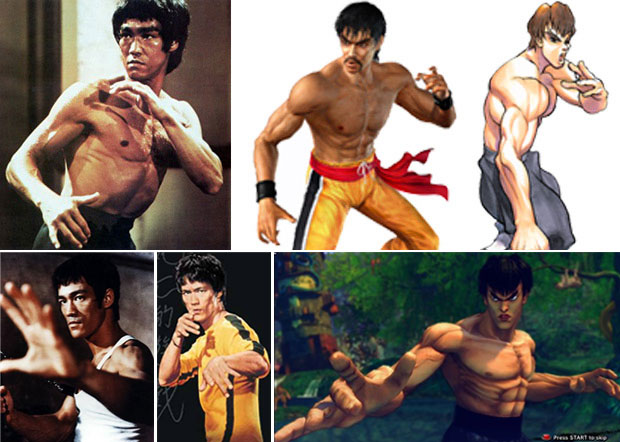
Muscle memory is a neurological process that allows you to remember certain motor skills, and perform them without conscious effort. Lee developed the ability to punch, and kick with power on reflex, and instinct, rather than conscious thought. This made him blindingly fast. In another example a professional boxer can actually defend himself, and counterattack even when they have been knocked silly. Commentators may say the fighter is in “survival mode” when in reality the subconscious has been programmed with dodges, and counter moves. The boxer continues fighting through the round, often without even seeing his opponent punch. This auto-pilot like fighting was programmed into him thanks to intense drills. Once they come to their senses they can begin applying a different strategy. Fighting games require this level of reflex, and ability to adapt to opponents. So how long does it take someone to get this good?
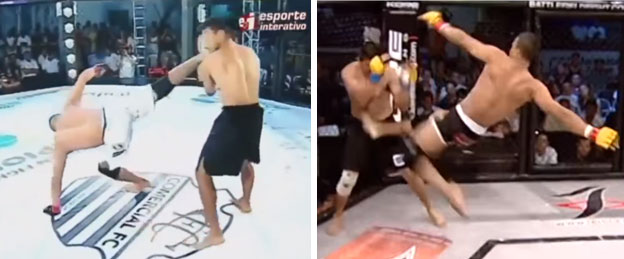
It takes roughly 10,000 hours to master a skill. This applies to just about anything; driving motor vehicles, playing ball sports, typing, musical instruments, dancing, martial arts, etc. I have been playing cello for almost 40 years and can say with all certainty that if I practice each day I not only retain what I know, but get a little better. Even if I stop practicing for years I still am able to play just about any music on sight. This is because I put in my 10,000 hours a long time ago. When it comes to fighting games the same rules apply. I can stop playing fighting games for years, but pick up the controller and steamroll new opponents the next day. Generation-X was there at the beginning of the video game revolution. We saw the creation of the fighting game genre, the peak, collapse, and rebirth of the format. This was over 35 years. Collectively we have much more experience than Millennials, or Gen-Z across hundreds of different fighting games. This was the dilemma for Mr. Nakayama, and his team had to overcome. How could they push the genre forward, while giving new players a chance to catch up?
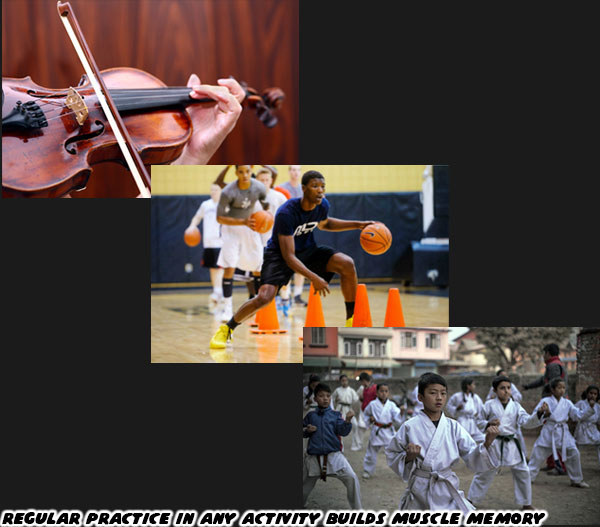
There is no substitute for practice, but what exactly do you practice? Where do you begin? You have to start by discovering how you learn best. I’ve worked in education most of my life. Previously I worked at a college as an Instructional Associate II for almost 15 years. I was in a department that taught students how to learn. One of the things they had to learn was the difference between good, and bad practice habits. What Bruce Lee was referring to had a lot to do with bad habits. You could spend 10,000 hours practicing bad habits, bad forms of punching, and kicking, and never develop as a fighter. The quality of what a student practiced had as much to do with how long they practiced. The best example of this was the free throw example from one of my colleagues. Professional basketball players, specifically the centers, or big men of the league were notorious for being poor free throw shooters. They scored the majority of their points very near to the basket, and rarely had to shoot from the perimeter. Legendary players like Wilt Chamberlain, and Shaquille O’Neal had a poor free throw percentage no matter how much they practiced, or what techniques they tried. What basketball historians fail to mention were they were practicing incorrect forms, and techniques for their size, and physiology. So imagine that they put in their 10,000 hours mastering an incorrect form. This turned into muscle memory, and just cemented that they wouldn’t improve much no matter how long they played in the NBA. Learning, and practicing the correct habits was paramount to becoming a good fighting game player.
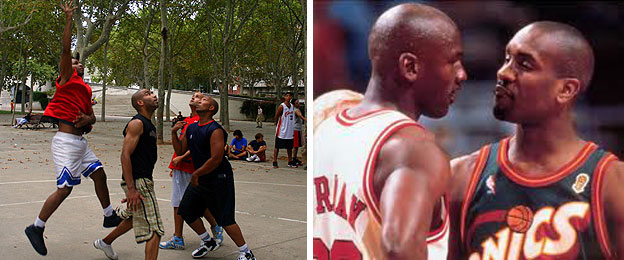
My family, and friends consider me to be a good driver. I credit that to playing arcade racing games for years before I ever got a license. My father refused to believe that playing games in the arcade could translate to real world skills. I learned about braking distances, speed management, and tire grip thanks to
Atari’s Hard Drivin’, and Race Drivin’. Gen-X was able to get their 10,000 hours from playing on arcade cabinets through the ’70s, ‘80s, and ‘90s. This applied across different genres. Most cities had a dozen arcades with every game imaginable. Even small towns with a bowling alley, or pizza parlor were guaranteed to have a few arcade hits. When fighting games became popular it seemed that everyone was playing them. People born post 2000 wouldn’t understand the runaway popularity of Street Fighter II. There was no phenomenon like it before (save for Space Invaders, and Pac Man). Street Fighter II was responsible for launching hundreds of copycat titles. The demand for the game was massive. Some arcades would have four, or more SFII cabinets running nonstop from the time they opened, until closing. On weekends there would be dozens of players lined up for hours to play next.
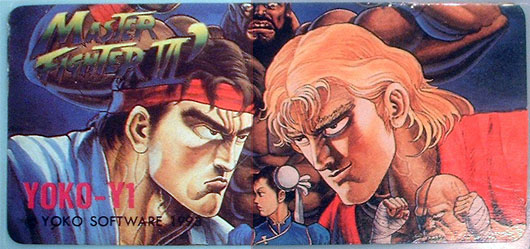
Unfortunately for Capcom the demand outstripped supply. Illegal bootleg copies from Taiwan were being sold on the cheap all over the world. Look up the history of the
Rainbow Edition Street Fighter II boards to learn some amazing history. Fans no longer had to go to the arcade to play the game. In the early ‘90s they could find a copy at every corner market, liquor store, laundromat, and 7-11. The 10,000 hours my generation put in came from a live environment, with different styles of play, techniques, and abilities. The players from my generation not only had the luxury of the arcade, but we were the first generation to get fighting games on the home consoles. I would play at the arcade all day, get home, and be challenged with the different styles of my brothers, friends, and cousins. This forced me to become better in order to keep up with them. My 10,000 hours translated into being proficient at other fighting games, racing games, or the other genres that I enjoyed.
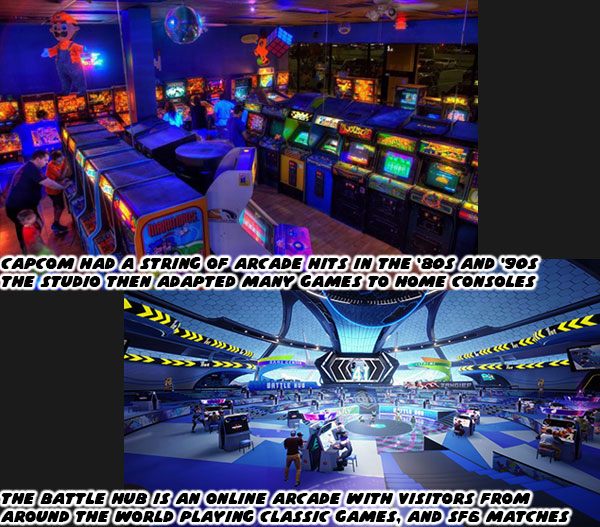
I had the luxury of being walking distance from an arcade. I was also lucky enough to have home consoles, and brothers to play against. I was able to learn the correct habits, and practice them again, and again. Fast forward 30 years. Without arcades, or cabinets in every local business then how does the industry teach a new generation to play fighting games? How do new players get their 10,000 hours, how do they adapt to different opponents, and strategies? This was the challenge to the Street Fighter 6 team. The studio took multiple approaches to reach every level of player, and more important, every learning type. One of the biggest features in SF6 was the Battle Hub. Capcom created a virtual arcade that was open to audiences all over the world 24/7. Growing up I couldn’t even imagine a place this amazing. The fact that I could create a friends list, and hang out in a safe, virtual environment was brilliant. The added benefit of having classic Capcom arcade games cycling through every day with unlimited credits was a dream come true.
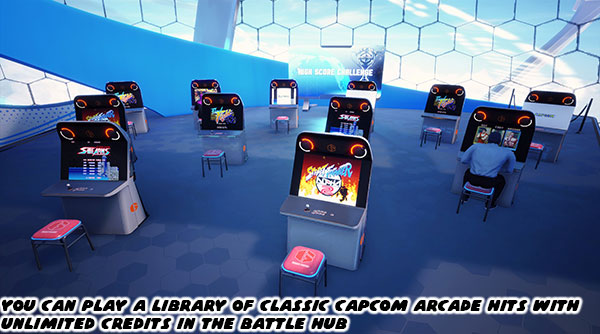
The Battle Hub was just one segment in an entire package designed to capture new players, and get them used to a high level of competition. I will break down how Capcom was able to bring in new players, and ease them into the genre in the next blog. If you are a long time fan of Street Fighter then I would like to hear your impressions of SF6. If you have never played any game previously then tell me your experiences in the comments section please. As always if you would like to sponsor me
please visit my Patreon page and consider donating each month, even as little as $1 would help make better blogs and even podcasts!




















No comments:
Post a Comment